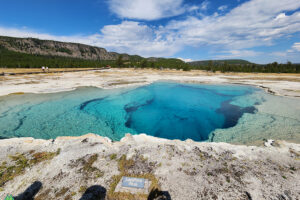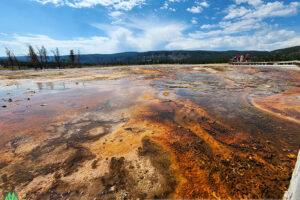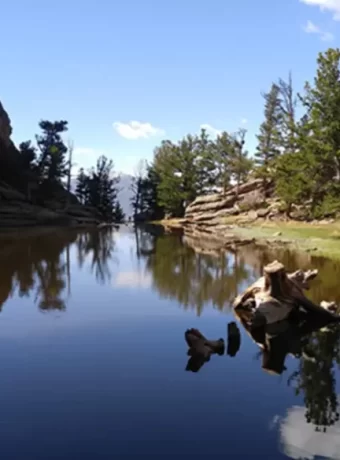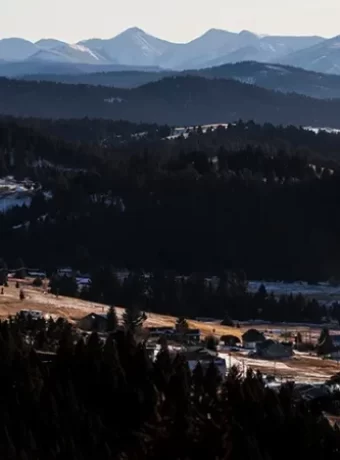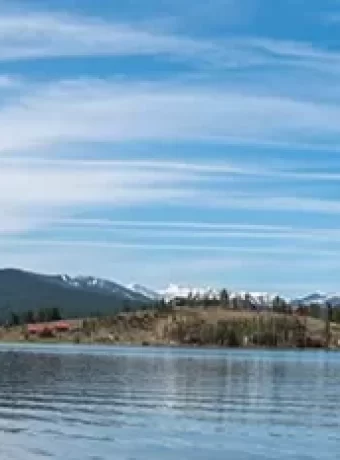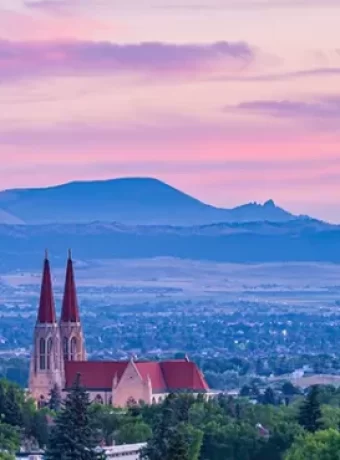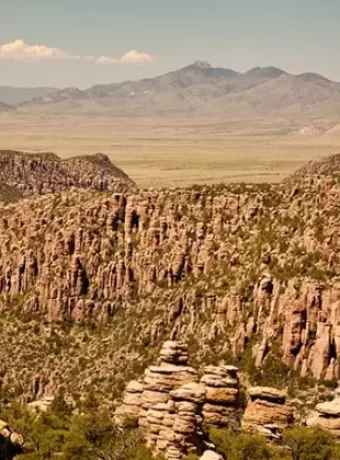Exploring the Greater Yellowstone Ecosystem: A Introductory Guide
The Greater Yellowstone Ecosystem (GYE) isn’t just a national park; it’s a sprawling web of life, a biological tapestry woven across Wyoming, Montana, and Idaho. This wild heart of America pulses with raw beauty and an untamed spirit, drawing adventurers, scientists, and nature lovers alike. This ecosystem is one of the largest intact temperate-zone ecosystems.
But it’s not just about pretty landscapes. The GYE is crucial for global biodiversity. Its survival faces threats, and many people don’t understand its importance.
Table of Contents
Exploring the Greater Yellowstone Ecosystem
This ecosystem covers almost 22 million acres, one of Earth’s largest nearly intact temperate-zone ecosystems. The anchor is Yellowstone National Park, America’s first national park, in the northern Rockies. The Greater Yellowstone Coalition works to protect this vital habitat.
It’s surrounded by national forests, wilderness areas, and wildlife refuges, forming a vital sanctuary. These lands provide space for wildlife migration, dispersal, and survival, encompassing a vast area within the northern Rockies.
The Biodiversity of Greater Yellowstone: More Than Just Bears and Bison
Grizzly bears and wolves often steal the show as keystone species, but the Greater Yellowstone Ecosystem supports an incredible amount of life. Think 300+ bird species, 1,000+ native plants, and geothermal wonders like Old Faithful.
Beneath the iconic megafauna lies a world of intricate connections. Even tiny moths ( Montana Moth Project ) play as crucial a role as the mighty bison, highlighting the area’s rich biodiversity and supporting a wide variety of wildlife.
The Powerful Geology Shaping the Greater Yellowstone Ecosystem
The Greater Yellowstone Ecosystem’s landscape is a product of powerful geologic forces. Volcanic activity created the Yellowstone Caldera, a giant crater at Yellowstone’s center. The Yellowstone Plateau also influences its weather.
The elevated landscape creates rising air currents and guides wind currents, producing substantial rainfall. This volcanic activity fuels the geothermal features that make Yellowstone famous, featuring active geysers.
Tectonic plate movements uplifted mountains and created the Grand Canyon of the Yellowstone River, adding to the region’s biodiversity. These geologic wonders contribute to the natural wealth of the ecosystem, showcasing a square mile landscape unlike any other.
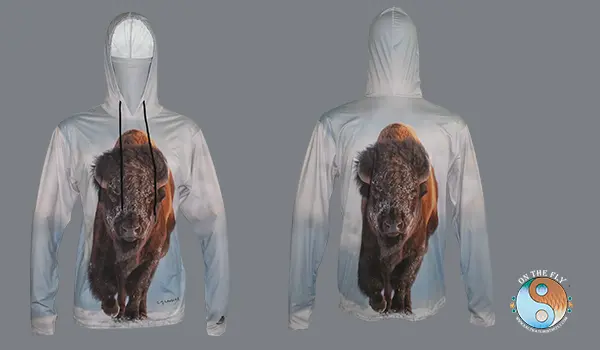
Greater Yellowstone Buffalo Graphic Hoodie
The best in outdoor apparel, designed by our team of hikers, backpackers, fly fishers. Pick up a Greater Yellowstone Buffalo Graphic Hoodie Today.
UPF-50 sun protection Greater Yellowstone Grizzly Bear Graphic Hoodie.
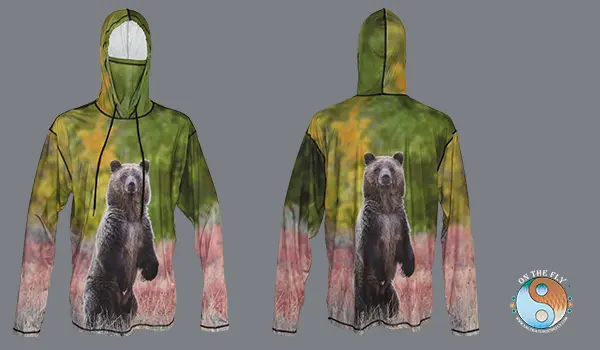
Greater Yellowstone Grizzly Bear Graphic Hoodie
Watershed of the Greater Yellowstone Ecosystem: A Lifeline for the West
The Greater Yellowstone Ecosystem is the birthplace of important rivers. The Yellowstone River, the country’s longest undammed river, starts here, flowing to the Missouri River. Yellowstone Lake, North America’s largest high-elevation lake, is a crucial part of this system.
Part of the Snake River system, flowing towards the Pacific Ocean, also winds through the GYE. The Lamar and Madison rivers, tributaries flowing through important habitats supporting many native plants, contribute to this system.
These waterways make the GYE vital to communities beyond its borders, playing a vital role in providing water for people and wildlife downstream.
Challenges and Conservation in the Greater Yellowstone Ecosystem
This natural treasure faces threats. Human activities outside the park fragment habitats. Climate change alters weather, affecting everything from native plants to food sources, particularly impacting migrating wildlife and their vital habitats.
Conflicts arise where human activities overlap with sensitive bear territory in Yellowstone and surrounding national forests. Conservation efforts, led by organizations like the Greater Yellowstone Coalition, work to protect migration corridors and promote responsible land use.
These efforts aim to mitigate the impact of climate change, protect the grizzly bear population, and maintain crucial food sources for wildlife within the ecosystem. Preserving these areas is vital for maintaining the bighorn sheep and other iconic wildlife of the Greater Yellowstone.
A Closer Look at Yellowstone’s Petrified Forest
In the park’s northwest corner lies the Petrified Forest of Specimen Ridge. This isn’t an ordinary forest; it’s a time capsule from 27 million years ago when a massive floodplain covered the region.
Colossal trees like redwood (the most common fossilized tree at Specimen Ridge), cedar, and cypress thrived. Over millions of years, these trees were buried and fossilized.
They now stand as silent witnesses to a lost world. Park officials are planning for the forest’s preservation by limiting foot traffic, minimizing erosion, and monitoring the impacts of climate change.
Hiking Specimen Ridge
Specimen Ridge shows off Yellowstone’s cool fossil history. This spot in the northwest part of Yellowstone National Park is a geological wonder. It’s a must-see for anyone who likes paleontology, geology, or Yellowstone’s natural wonders. About 27 million years ago, a huge floodplain covered this area. This was during the Oligocene epoch. The floodplain had tons of plants and animals. It even had big trees that later became the petrified forest.
Over a long time, these trees fell. Sediment quickly buried them. This kept them from rotting. The sediment packed together and became a rock called travertine. Minerals from nearby rocks and groundwater went into the travertine. Slowly, these minerals turned the trees to stone.
Today, Specimen Ridge has many fossilized tree trunks, stumps, and roots. The forest has over 1,000 tree fossils. Many are still standing upright, like they were millions of years ago. The trees are really well-preserved. You can still see growth rings, bark, and even roots.
You’ll find many kinds of fossilized trees at Specimen Ridge:
- Redwood: This is the most common tree there. It has a red-brown color.
- Cedar: This is a smaller tree. It’s lighter in color and has knots.
- Cypress: This is a tall, thin tree shaped like a column.
You can hike to Specimen Ridge. It’s a 3.5-mile hike from the parking area. The trail goes through a meadow and into the forest. You can walk among the ancient tree fossils. But, make sure you stay on the trail. This place is fragile. Yellowstone National Park wants to protect Specimen Ridge. They work hard to stop erosion. They also limit visitors. This helps keep the forest safe. They even keep track of climate change. They want to learn how it affects the forest.
Sun protective, sewn in patented facemask for wind and more UV protection. Greater Yellowstone Bald Eagle Graphic Hoodie.
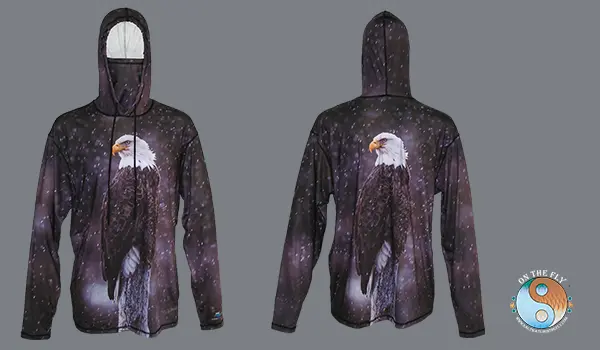
Greater Yellowstone Bald Eagle Graphic Hoodie
Biscuit Basin Before Eruption 2024
- Looking down into Sapphire Pool
- Mineral colorization around the edge of Black Diamond Pool
Learn more about Biscuit Basin.
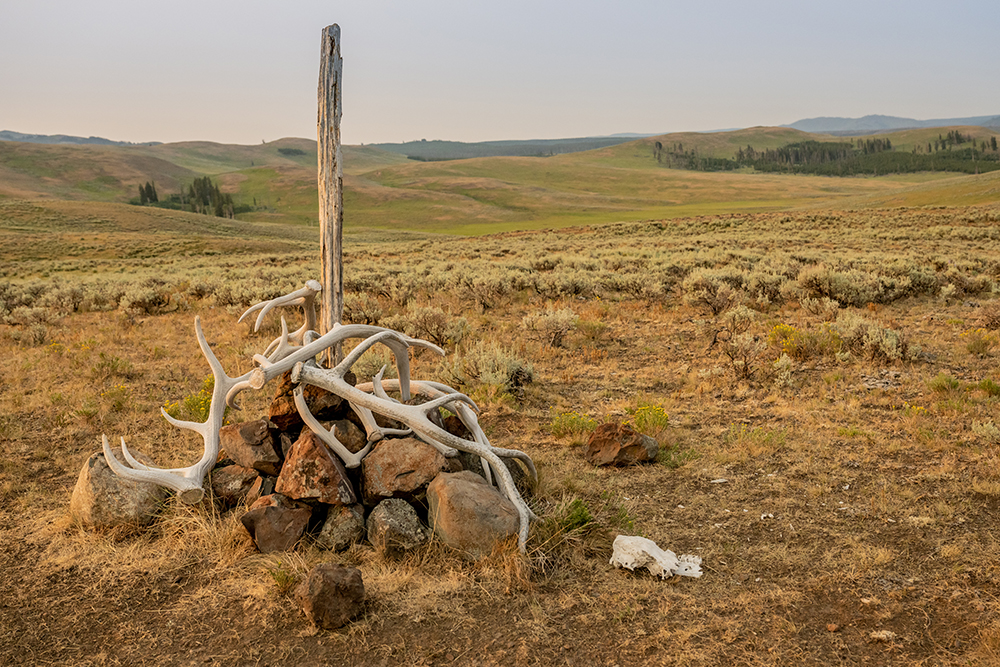
Specimen Ridge Trail
Fly Fishing Greater Yellowstone Ecosystem
The Greater Yellowstone Ecosystem (GYE) is a dream spot for fly fishing. Crystal-clear rivers snake through stunning landscapes. This place is teeming with trout. But it’s more than just catching fish. It’s about connecting with nature’s raw beauty.
The Yellowstone River is an iconic waterway. It’s the heart of the GYE. This river boasts some of the best dry fly fishing around. It’s famous for its cutthroat trout. But you’ll also find brown and rainbow trout. The river winds through meadows, canyons, and forests. It gives you a chance to really see the area.
The Madison River is another must-fish spot. This river is known for its technical fishing. It’s great for anglers of all skill levels. The Madison offers great hatches. These hatches bring out big trout. This makes for exciting dry fly action. Hebgen Lake Recreation Area, is another part of the ecosystem you will want to fish.
The Snake River is a bit different. It offers something special. This river carves its way through dramatic gorges. This creates amazing pocket water. This river is home to fine-spotted cutthroat trout. It also has some big brown trout. Floating the Snake is a unique experience. You’ll feel lost in the wilderness.
The Gallatin River is smaller. But don’t let that fool you. It offers amazing fishing. This river is close to Bozeman, Montana. This makes it easy to access. The Gallatin is full of feisty rainbow and brown trout. They love to take a well-presented fly.
Beyond these big rivers, the GYE has many smaller streams. These streams are hidden gems. They offer a chance for solitude. You can explore waters less fished. You can discover your own secret fishing holes. These streams hold native cutthroat trout. These trout are a special catch. They’re a true symbol of the GYE.
Let’s not forget the Absaroka Beartooth Wilderness Area, Wind River Wilderness Area. Fly Fishing and hiking is an experience you will never forget. So go make Memories. Or northeast in to the Lee Metcalf Wilderness complex with hikes like Lightning Lake. (pothole lake, no fish) just a nice hike. Saw lots of wildlife including a black bear.
Before you go, remember to get a fishing license. Also, check the regulations. These vary by area and season. Hire a guide if you’re new to the area. A guide can give you valuable insight. They can help you have a successful trip. Respect the environment. Pack out everything you pack in. Help keep this special place pristine for future generations.
Human Impact and the Future of the Greater Yellowstone Ecosystem
Some conservationists envision a larger Yellowstone, a “Greater Yellowstone National Park”. This expanded park could contribute to the “30×30” goal of protecting 30 percent of U.S. lands and waters by 2030.
This would incorporate more land in Montana, Wyoming, and Idaho, including designated Wilderness Areas. Enhanced conservation efforts, like habitat restoration and educating local communities, play a vital role in preserving Greater Yellowstone. Organizations like the Absaroka-Beartooth Wilderness Foundation are also doing wilderness preservation work.
Protecting wildlife corridors and providing food sources are important aspects of conservation. This work ensures the long-term survival of diverse species, from elk calves to cutthroat trout, within the park and the greater ecosyst
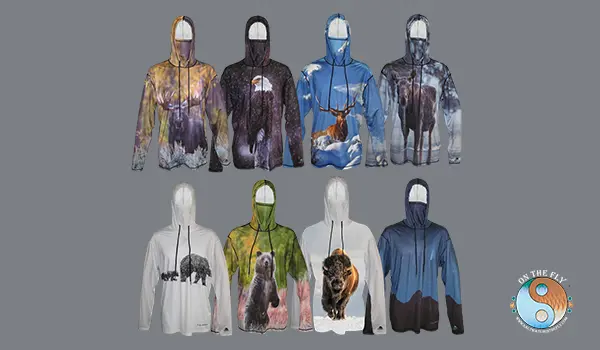
Graphic Hoodies of Greater Yellowstone Wildlife.
Take a look at the complete line of Greater Yellowstone Wildlife Graphic Hoodies.
FAQs about Greater Yellowstone Ecosystem
What defines the Greater Yellowstone Ecosystem?
The Greater Yellowstone Ecosystem is defined by its interconnectedness. It includes Yellowstone and Grand Teton National Parks, along with surrounding national forests, wilderness areas, and wildlife refuges. This creates a web of habitats essential for the area’s diverse plants and animals. It’s a mostly-intact, large protected wild area, unlike anything remaining in the northern temperate part of the world. Yellowstone National Park is part of a unique ecosystem, found in North America. Its national parks status contributes significantly to preservation.
What animals live in the Greater Yellowstone Ecosystem?
Besides grizzly bears, wolves, and bison, the GYE supports elk, moose, pronghorn, bighorn sheep, mountain lions, and a wide array of other wildlife. Many mammals, insects, reptiles, and birds like foxes also thrive there. Over 300 bird species and many other diverse species call this ecosystem home. You can find more detail about specific animals on the Greater Yellowstone Coalition website.
How many grizzly bears are in the Greater Yellowstone Ecosystem?
About 700-1000 grizzlies live in the Greater Yellowstone Ecosystem. Since they are endangered outside this protected range, this area is crucial for their survival, as is the National Wildlife Federation.
What are producers in the Greater Yellowstone Ecosystem?
Producers, the foundation of the food chain, convert sunlight into energy through photosynthesis. They include conifer trees and grasses. In thermal areas (near geysers and hot springs), microbes and algae act as producers. These producers provide food for a wide variety of species. Their health impacts the entire ecosystem, especially for the grizzly bear. The Greater Yellowstone Coalition has more information about Yellowstone’s plants.
Conclusion of Greater Yellowstone Ecosystem
The Greater Yellowstone Ecosystem is more than a park; it’s a symbol of wilderness, a biodiversity hotspot, and a testament to natural processes. It faces challenges from human impact and climate change, and latest news is often vital for keeping track of what’s happening.
Preserving this ecosystem is crucial for maintaining wildlife habitats, biodiversity, and open spaces on both private and state lands. Protecting such pristine wild spaces, like Yellowstone National Park, is increasingly important. This protection also impacts wildlife corridors for animals including grizzlies, along with Montana fish and wildlife such as cutthroat trout. Organizations such as the Yellowstone Ecological Research Center promote conservation within this vast and complex natural world.
Our support is essential for its survival. Preserving the Greater Yellowstone Ecosystem today protects it for future generations. Learn more about how you can contribute to preserving Greater Yellowstone National Park. Everyone living downstream benefits from a healthy Yellowstone National Park, reminding us why preserving the Greater Yellowstone Ecosystem matters.

